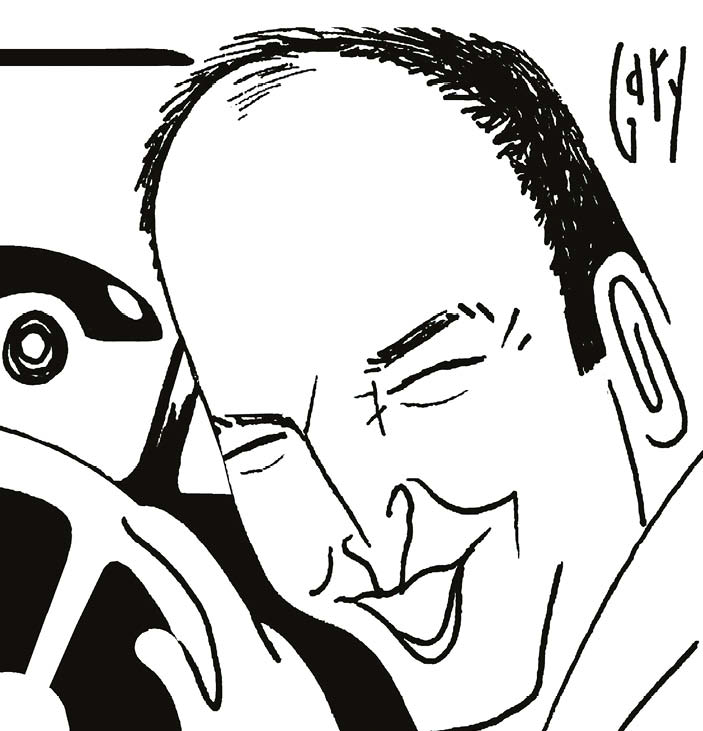Andrew Frankel

I have just spent a week in New Zealand’s South Island, mainly to drive a preposterously fast racing car, about which you’ll be able to read next month. But you don’t go that far, do the job, turn on your heels and head straight back to Christchurch. Or I didn’t. Instead a colleague and I headed out to take a look at what turned out to be the most beautiful country I have visited.
You’ll be glad to learn what follows is not an ad for the New Zealand tourist board, but some thoughts on that most abused of all automotive lifeforms known as the hire car.
The curious thing is that the only hire cars I’ve ever hated have been those used for day jobs. I hate the queuing, the form filling, the finding the bloody thing in the car park, the photographing all the damage they hoped you’d not notice. It all accounts for a considerable chunk of your experience. Have one for a week and such nonsense takes up a very small proportion of your time.
And here’s my central contention: give it enough time and you will eventually bond with any car with which you spend time, almost regardless of what it is, and how well it performs its duties.
On this occasion the hire car was a Toyota Highlander. It’s a seven-seat SUV, slightly smaller than a Discovery and as nondescript a car as I’ve driven in a long time. It had a V6 engine of I guess around three litres, which only started to offer respectable performance once its dim-witted automatic gearbox had woken up. The cabin had lots of handy storage, the ride was reasonable, the handling a joke, and now I’m really struggling to recall any other defining features.
“You bond with any car you spend time with, regardless of if it’s good”
And yet as we roamed around, hiking around mountains, finding glaciers and all the things you should do in this part of the world, it was always good to see it there, waiting for you, seat heaters and air conditioning ready to warm your body and dry your clothes. I drove it nearly 1500 miles, down the east coast, over the Haast Pass to the west, up that coast and back over Arthur’s Pass to Christchurch, and plenty of other places in between.
At the airport I decided I was not going to look over my shoulder as I walked to the terminal; that would have been ridiculous. Such cars are white goods in automotive form, and yet I couldn’t help myself. We’d been a lot of places together, shared a lot of time. I resisted for about a minute then glanced back, but it had already gone.
Driving the McLaren Senna GTR (page 104) made me dig around for something that’s been on my mind for a while: namely the tyres fitted to high-performance road cars. At the Senna event I first drove the road car and then the GTR, so was able to compare the relative performance of their road and race tyres. Now, the comparison is not direct because the GTR is changed in other significant ways such as its suspension and aerodynamics, but no one I spoke to doubted or denied that even the best modern road tyres are these days a serious impediment to a car such as this. And such is the downforce that even some road cars can now produce, it is now having to be mapped to the load limits of the tyre.
What to do about it is not entirely clear. Road rubber has come a long way in recent years, yet despite the fact the Senna GTR is fitted with quite a hard, long-life slick, I am told the difference between the performance of even the stickiest street tyre and the slick is huge. Compare road tyre performance in the rain relative to a purpose-built racing wet as I did at Snetterton, and the gap between them widens still further.
Of course you could make road tyres softer, and that’s what manufacturers are doing, not least because without them they’d have no hope of playing the Nürburgring lap record game so beloved of their marketing departments. Michelin has a handy thing called a Cup 2R which can generate extraordinary lateral grip, but when I drove a Ferrari Pista with some factory support, after five flying laps the chaps from Ferrari said the tyres were already past their best. And don’t forget these are the same tyres that have to be sufficiently legal and safe to get you home again unless, like Ferrari, you also turn up with truck full of rims and a couple of inexhaustible fitters. Or can cart a spare set of wheels around with you everywhere.
And it’s only going to get worse: not all of our electric future is yet clear, but what does seem certain is that sports car are not only going to get even faster, they’re going to be heavier, too. For both reasons they will make yet greater demands of tyres that are already struggling to cope. Any track day car will have this problem to one extent or another, and it can be felt not just at the apex, but in every braking area and often in limited traction, too.
The ideal would be to have a set of standard, hard, deeply grooved tyres for the road, and slicks available at every track you visit. But that doesn’t seem practical to me. So my best advice if you own a track weapon is simply never to drive it or any other on slicks. Or simply forget about lap times and going fast, and just skid about having fun instead…
A former editor of Motor Sport, Andrew splits his time between testing the latest road cars and racing (mostly) historic machinery
Follow Andrew on Twitter @Andrew_Frankel

